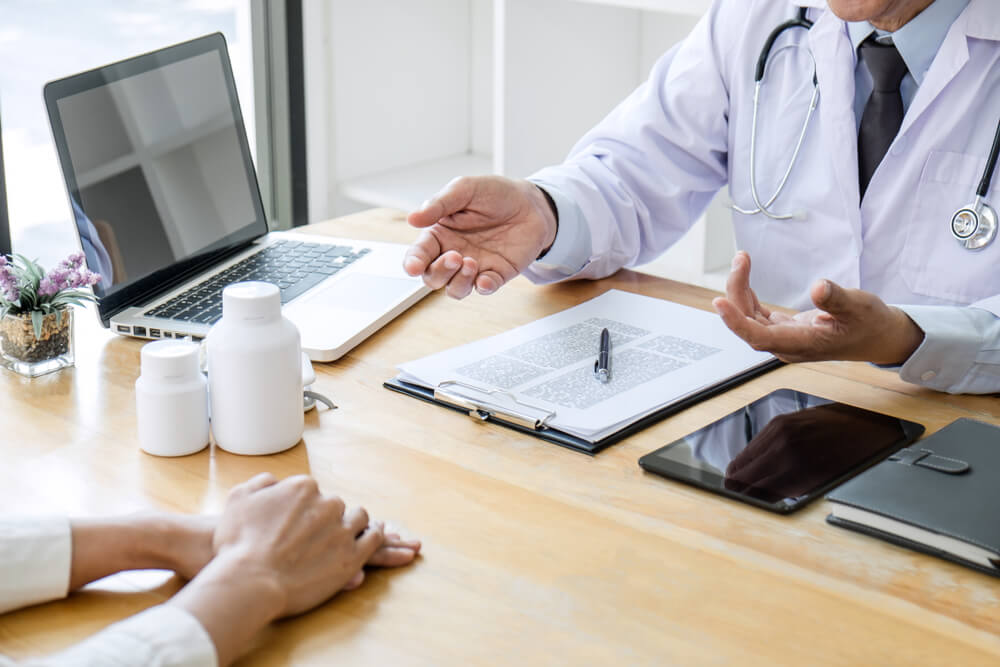Vulvodynia is a chronic pain condition that affects a woman’s vulva and the external genitalia, including the labia, clitoris, and vaginal opening. The pain can be localized or generalized and ranges from mild to severe. It can be a source of significant physical and emotional distress and can significantly impact a woman’s quality of life. In this article, we will explore what vulvodynia is, its symptoms, when to seek medical advice, potential treatments, and possible causes of this condition. If you worry about your gynecological health, don’t hesitate to make an appointment with the best gynecologist in Tamarac, FL, at Gynecology and Women’s Wellness.
What’s Vulvodynia Pain Like?
The vulvar pain that stems from vulvodynia can be described as burning, stinging, itching, or aching. It can occur spontaneously or can be triggered by touch or pressure, such as during sexual activity or sitting for prolonged periods. The pain can be localized to a specific area of the vulva or can be generalized and involve the entire vulva. The intensity and frequency of pain can vary widely from person to person and can range from mild discomfort to severe pain that interferes with daily activities.
Common Vulvodynia Symptoms

Vulvodynia symptoms can vary depending on the individual. Some women may experience constant vaginal pain, while others may experience intermittent pain. The pain may be mild or severe and can be triggered by various activities such as sexual intercourse, exercise, tampon use, etc. Other symptoms may include:
- Burning or stinging pain in the vulva
- Itching or rawness in the vulva
- Soreness or throbbing in the vulva
- Pain during sexual intercourse
- Pain during urination
- Pain during menstrual periods
When to Get Medical Advice?
If you are experiencing any of the mentioned vulvodynia symptoms, it is important to seek medical advice. Your healthcare provider can help you determine the cause of your symptoms and recommend appropriate treatments. In case you are experiencing any of the following symptoms, you should seek medical attention immediately:
- Severe pain or discomfort
- Bleeding or discharge from the vagina
- Foul-smelling discharge from the vagina
- Fever or chills
- Pain during urination
- Severe pain during sexual intercourse
Things to Do That Could Provide Relief
While there is no cure for vulvodynia, there are several things you can do that may help to relieve your symptoms. Some of these include:
- Avoiding irritants: Certain products, such as scented soaps, douches, and feminine hygiene products, can irritate the vulva and worsen symptoms. Avoiding these products and stick to gentle, fragrance-free soaps and detergents is best.
- Using lubricants: Using a water-based lubricant during sexual activity can help to reduce friction and minimize discomfort.
- Wearing loose-fitting clothing: Tight clothing can cause friction and irritation in the vulva. Wearing loose-fitting clothing made from breathable materials such as cotton can help to reduce symptoms.
- Practicing good hygiene: Keeping the vulva clean and dry can potentially reduce symptoms. Avoiding hot tubs and taking warm, rather than hot, baths can also help.
- Managing stress: Stress can worsen symptoms of vulvodynia. Practicing relaxation techniques such as deep breathing, meditation, or yoga can help to minimize stress levels.
Potential Treatments for Vulvodynia
There are several potential treatments for vulvodynia. The type of treatment recommended will depend on the severity and duration of the symptoms. Some potential treatments include:
- Topical medications: Topical medications such as lidocaine and estrogen creams can help to reduce pain and inflammation in the vulva. These medications are typically applied directly to the affected area.
- Oral medications: Some medications, such as antidepressants and anticonvulsants, can help to reduce nerve pain associated with vulvodynia. These medications are typically taken orally and may require several weeks or months to take effect.
- Physical therapy: Physical therapy can help to relax the muscles and improve blood flow to the vulva, which can help to reduce pain. This may involve exercises to strengthen the pelvic floor muscles or manual therapy to release tension in the muscles.
- Vaginal rejuvenation: The MonaLisa Touch laser treatment for vaginal rejuvenation is a non-invasive, pain-free solution that can work even for hard-to-treat cases such as vulvodynia. The laser works gently on the vaginal mucosa, stimulating collagen production to repair damaged tissue and restore the mucous membrane’s natural trophic balance.
- Nerve blocks: In some cases, nerve blocks may be recommended to help reduce vaginal pain associated with vulvodynia. This involves injecting a local anesthetic into the affected nerves to relieve temporary pain.
- Surgery: In rare cases, surgery may be recommended to remove the affected tissue in the vulva. This is typically only considered a last resort when other treatments have been unsuccessful.
Possible Causes of Vulvodynia
The exact cause of vulvodynia is not fully understood, but several potential factors may contribute to this condition’s development. These include:
- Nerve damage: It is thought that damage to the nerves in the vulva may contribute to the development of vulvodynia. This damage may be caused by injury, infection, or inflammation.
- Hormonal changes: Changes in hormone levels, such as those that occur during menopause, can cause thinning and drying of the vaginal tissue, leading to vulvodynia.
- Musculoskeletal factors: Tension or dysfunction in the pelvic floor muscles may contribute to the development of vulvodynia.
- Infection: In some cases, vulvodynia may be caused by an infection, such as a yeast infection or bacterial vaginosis.
- Allergies or irritants: Allergic reactions or irritation to products such as soaps, detergents, or feminine hygiene products can lead to vulvodynia.
Other Causes of Vulvar Pain

While vulvodynia is a common cause of vulvar pain, there are other potential causes that should be considered. These include:
- Infection: Infections such as yeast infections, bacterial vaginosis, or sexually transmitted infections can cause vulvar pain.
- Skin conditions: Skin conditions such as eczema, psoriasis, or lichen planus can cause itching, redness, and soreness in the vulva.
- Hormonal changes: Changes in hormone levels can cause thinning and drying of the vaginal tissue, thus causing vulvar pain.
- Vulvar cancer: While rare, vulvar cancer can cause pain, itching, or changes in the appearance of the vulva.
- Sexual abuse or trauma: Sexual abuse or trauma can also cause physical and emotional trauma, which can trigger vulvar pain.
The Bottom Line
Vulvodynia can have a significant impact on a woman’s emotional well-being and sexual function. Women with vulvodynia may experience anxiety, depression, and difficulty with sexual intimacy. Healthcare providers need to address these issues and provide support and resources to help women cope with the emotional aspects of vulvodynia as well.
In summary, vulvodynia is a complex and often misunderstood condition that can cause significant pain and distress for women. But with the proper care and support, many women can successfully manage their symptoms and improve their quality of life.
If you are experiencing vulvar pain, don’t wait to seek medical advice to determine the cause of your symptoms and explore potential treatment options. You can always count on Dr. Andrew Krinsky at Gynecology and Women’s Wellness for any concerns about your gynecological health and well-being.


